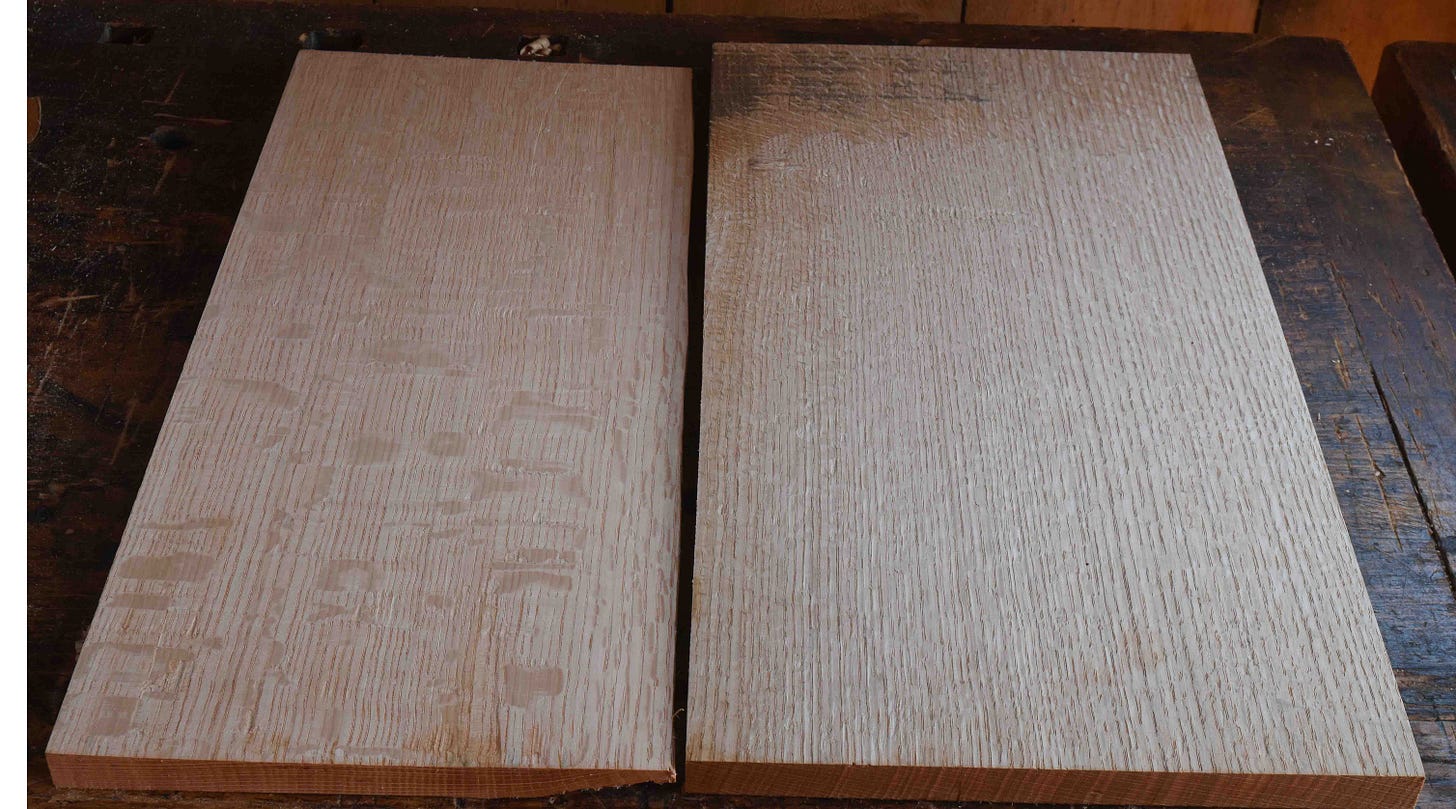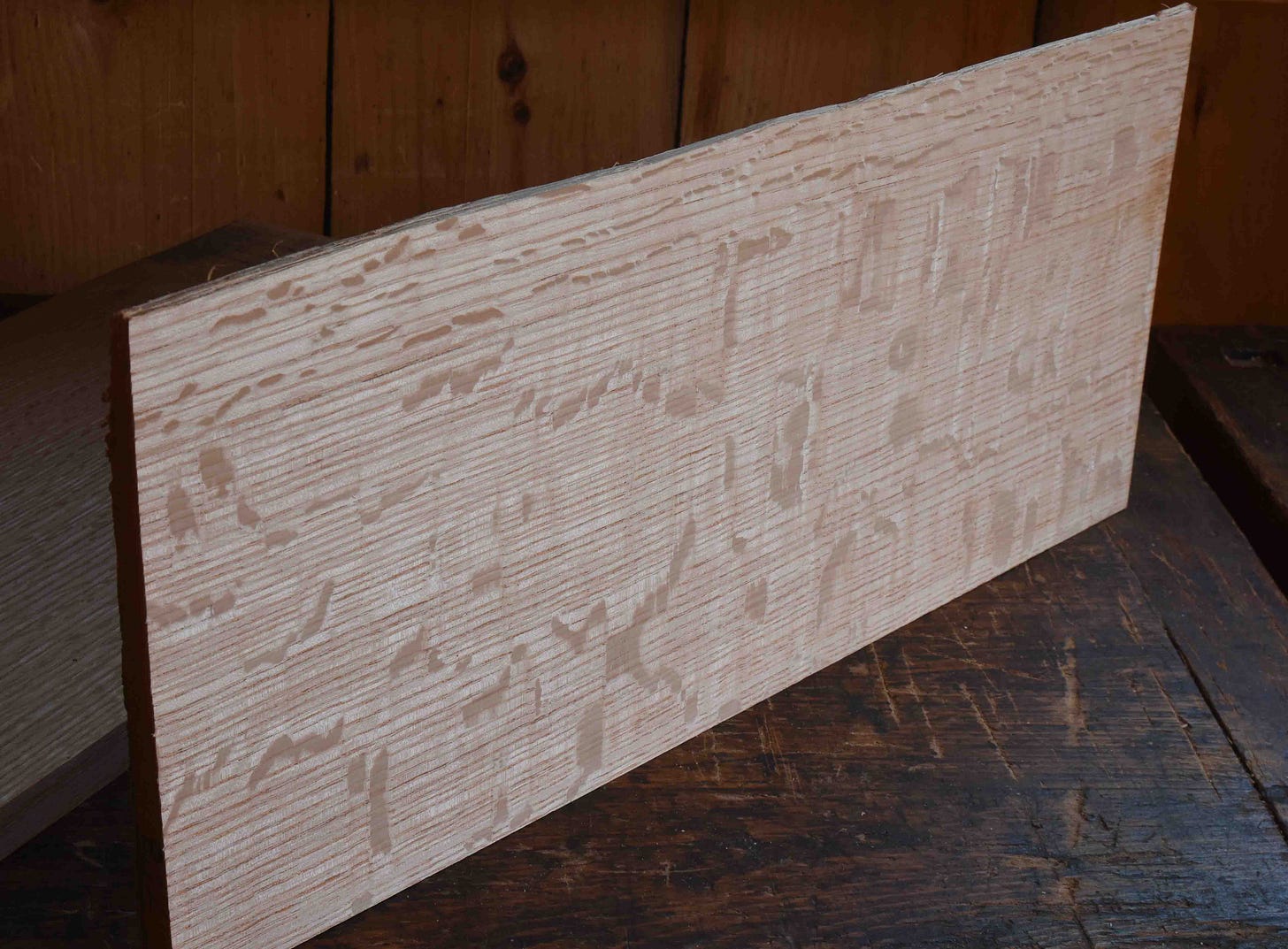When I teach carving or making a carved box the students use air-dried quartersawn red oak. The joined furniture work I do uses riven oak (most always red, sometimes white). I had a leftover partially-carved panel recently - offered it for sale. It got snatched up so then I took orders for 4 more.
For things like this I use the sawn stock - I save the riven material for furniture. It’s a good amount of work to produce oak boards like that, so I like to make the most of them. The quartersawn stuff can be a good alternative; less labor, more money. Here’s a look at both types of stock.
The riven panel is about 8” x 20” or so - not sure if it will be a panel for frame and panel work or a box front. The process of splitting, or riving, the board follows the ray plane - you can tell how closely it did so by looking at the broad face of the board and at the end grain. I need to back up a bit to clarify some terminology. The ray plane is the plane that radiates from the middle of the log out to the bark. That’s where the medullary rays are, even when you can’t see them - like in ash. Oak’s medullary rays are quite visible - easiest on the end grain. In the photo below I’ve oiled the end so the rings and rays show up better in the photograph. (you’d do best if you make that photo bigger…)
Those silvery lines running across this board’s width are the end views of the medullary rays. Sometimes they’re slightly curved, sometimes flat - most times inbetween. The goal is to produce a board in which the broad face is parallel to the radial plane. This board got it just about perfectly. On the face of the board, the rays show up as wide blotchy patches scattered around the surface of the board. In American oaks, the red oaks’ rays are smaller than in white oaks. Generally.
Keep reading with a 7-day free trial
Subscribe to Follansbee's Substack to keep reading this post and get 7 days of free access to the full post archives.






